JOINT BASE BALAD, Iraq - Forward Operating Base Kalsu, located south of Baghdad, and home to the 172nd Infantry Brigade and other units, provides a cross-section of the complex and many-faceted support systems Army Materiel Command provides to the troops.
Chief Warrant Officer 4 Darren L. Cook, the linchpin between AMC, the 172nd and organic units on the ground, heads the Brigade Logistics Support Team which includes staff from the 402nd Army Field Support Brigade and its 1st and 2nd Battalions, logistics assistance representatives from TACOM and CECOM Life Cycle Management Commands and embedded field service representatives.
Cook recalled his first deployment to Iraq with 1st Armored Division when the unit did not have the resources AMC brings to the battlespace.
"The unit was responsible for everything," Cook said. The Soldiers had to establish and manage the living areas, run dining facilities, mail rooms and laundry facilities while still accomplishing their wartime missions.
Those functions and more now fall under Army Materiel Command and BLST chiefs like Cook are the single face of AMC to the field. As such, Cook, who calls himself "an enabler," said he can leverage a different command structure from the traditional unit command structure to "go wherever needed to resolve issues and get results."
Reporting field unit needs to the AFSB and Army Sustainment Command, Cook and other BLST chiefs can raise issues and concerns to all elements of the Materiel Enterprise to generate the needed results.
Brigade, battalions and partner commands
The AMC team at FOB Kalsu may be smaller than some other BLST teams, but they provide a full range of support expertise - and if there is a need for a skill not resident at Kalsu, Cook can "bring the capability of the entire theater to FOB Kalsu as needed."
The resident experts are Dick Welch, logistics management specialist; Anthony Petredis, engineer; Timothy D. Fendley, Redistribution Property Assistance Team site lead; Jeffrey Peters, housing manager; Rudy M. Luga, armament logistics assistance representative, from TACOM LCMC; Michael R. Fitzsimmons, TACOM LCMC automotive LAR; Edward A. Scroggins, CECOM LCMC LAR, John G. Wright, Mine-Resistant Ambush-Protected vehicle site lead; plus the Dept. of the Army civilians who work in battalion programs and field service representatives employed by contractors who have equipment on the ground such as MRAP and route clearance vehicles.
The team of experts has the skill sets most in-demand by the units they support, primarily the 172nd Inf. Bde. In the words of John Wright, MRAP site lead, the team "brings the manufacturer to the FOB."
Customer support
TACOM LARs Luga and Fitzsimmons take time out once a month from their daily duties of going directly to the units to teach segments of the 172nd's Combat Leaders Course. They provide technical guidance and advanced training in their respective areas to Soldiers who have demonstrated that they are leaders.
"AMC brings a level of legitimacy to the course," said Sgt. 1st Class Eric R. Bunuan, noncommissioned officer-in-charge of the course conducted at Kalsu's Blackhawk Academy. "When the TACOM LAR comes in, they listen - he's the expert."
Bunuan said that in addition to the technical expertise the LARs bring, they also "open their [the students] eyes to assets they would not have seen otherwise."
Spc. John L. Barton, Company C, 2nd Battalion, 227th Aviation Regiment, agreed. He said he learned a lot more about MRAPs from Fitzsimmons.
The last day of the CLC was a situational awareness exercise and both Luga and Fitzsimmons were on hand early as the Soldiers prepared their vehicles and weapons. Their primary mission was not to provide direct assistance to the Soldiers but to assess the skills learned in the sessions they taught.
"We already taught them," said Fitzsimmons, TACOM automotive LAR. "Now we see what they learned."
"The civilians made the class much more interactive," said Sgt. George C, Hilt, assigned to Headquarters, Headquarters Company, 1st Battalion, 2nd Infantry Regiment. "We learned more about spot checks on weapons and specifics to look for. These are more tools in the tool kit."
Luga, TACOM armament LAR, was also on hand when Soldiers from Headquarters, Headquarters Detachment, 2nd Battalion, 28th Infantry Regiment prepared to go on a night patrol. He climbed on top of an MRAP to help Soldiers check the .50-caliber machine gun.
"AMC helps a great deal," said Sgt. 1st Class Adam C. Martinez, Headquarters Detachment, 2nd Bn., 28th Inf. Regt. "They help with vehicles and equipment and training. They're always available and they keep Soldiers up to date. They make sure every Soldier has the proper training."
"I'm pretty confident," said Spc. Ricardo R. Arriola, HHD, 2nd Bn., 28th Inf. Regt. "AMC helped us learn the .50-cal. more in depth and [the automotive LAR and BAE Systems field service representative] taught us step-by-step the systems on the Caiman - full maintenance checks by the book."
He added that all the Soldiers received driver training and many received maintenance training on the vehicles. His jobs on the mission included being the driver for the platoon sergeant's vehicle, primary medevac coordinator and ensuring everything on his vehicle is okay.
A somewhat different perspective on AMC vehicle support provided to the 172nd was provided by Spc. Candice E. Witherington, a deadline vehicle clerk in the brigade's maintenance section.
"The Sprung [MRAP site] is such a valuable asset," she said. "They take some of the burden off our mechanics and motor pools. They are the SMEs [subject matter experts] for all MRAP variants."
Deadline vehicle clerk is not Witherington's only job; she is also the mortuary affairs adviser for the brigade and brings that perspective into play when she talks about MRAPs and the support and training provided by AMC personnel.
"Mr. Wright [MRAP site lead] and his team are the tech experts to train us," she said. "They make sure the Soldiers know how to operate the vehicles and the MET [MRAP Egress Trainer] will absolutely help in survivability. It will be an excellent training aid."
RIP-TOA on the horizon
As daily missions continue, important work directed at getting the unit and its equipment ready to redeploy goes on in many offices within the 172nd area of responsibility. A relief-in-place/transfer of authority is not far off.
Early retrograde of excess equipment, reset of organizational equipment are underway while retrograde of theater-provided equipment - approximately 32,000 pieces of equipment consisting of over 8,700 line items valued at $2.5 billion - must be accomplished. So far, three early retrograde of equipment missions have been completed.
"Without AMC and the BLST we would not have been able to pull it off," said Chief Warrant Officer 2 Tuajuana N. Jones, 172nd property book officer. "The first ERE felt like it was going to last forever because it was so new."
"AMC has been assisting us with working with the Logistics Information Warehouse programs to correct errors," said Master Sgt. Michael W.B. Nichols, 172nd S4 NCOIC. "Chief Cook helps us contact the right people."
Units attached to the 172nd are also resetting their equipment. The nearly 900 Soldiers in the 9th Engineer Battalion have about 4,100 pieces of equipment ranging from route clearance vehicles to heavy construction equipment.
"AMC is integral to Reset," said Lt. Col. Benjamin J. Bigelow, 9th Eng. Bn. commander. "We have low-density equipment and must know where they [the vehicles] are and when they will be returned to us."
Maj. John L. Hudson, 9th Eng. Bn. executive officer, agreed and said the unit's previous redeployment "was a major challenge" and that this time they are getting a quicker turnaround on their planning and resolving any issues that come up.
"Chief Cook and AMC worked to train, help resolve issues and answer questions," said Sgt. Julie R. Buchun, 9th Eng. Bde. S-4 clerk. "We had over 500 errors at onset and now we're 99 percent ready."
Cook said that the unit's focus is either sustainment maintenance while in theater, then shifting to getting their supported unit's equipment reset and theater-provided equipment signed back over to the theater property book as they prepare to redeploy. His focus as BLST chief is on the life-cycle of the equipment or "cradle to the grave" tracking it through repair and distribution to another unit or until it is disposed of through the Defense Reutilization and Marketing Service.
"I wish I had this type of support when I was in a Brigade Combat Team," Cook said.

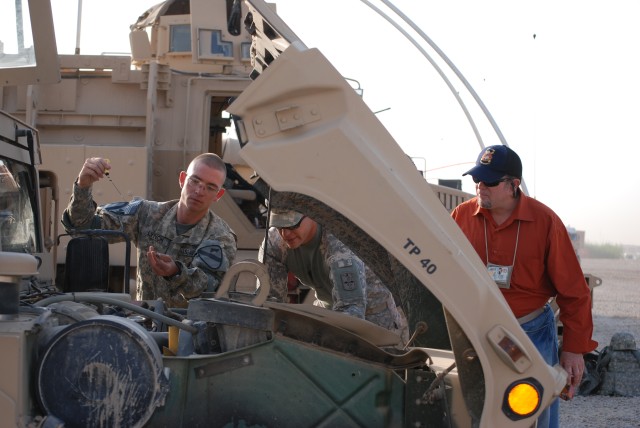

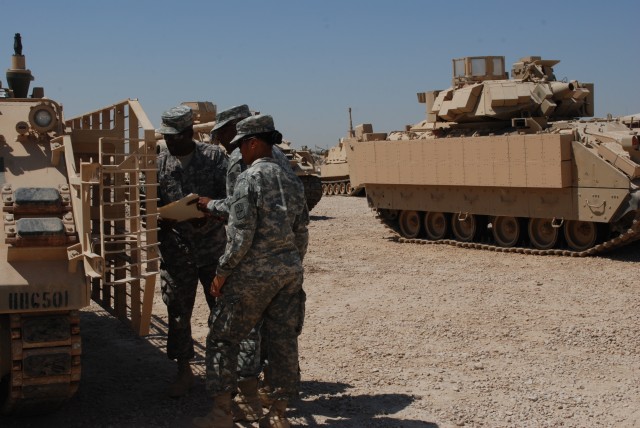
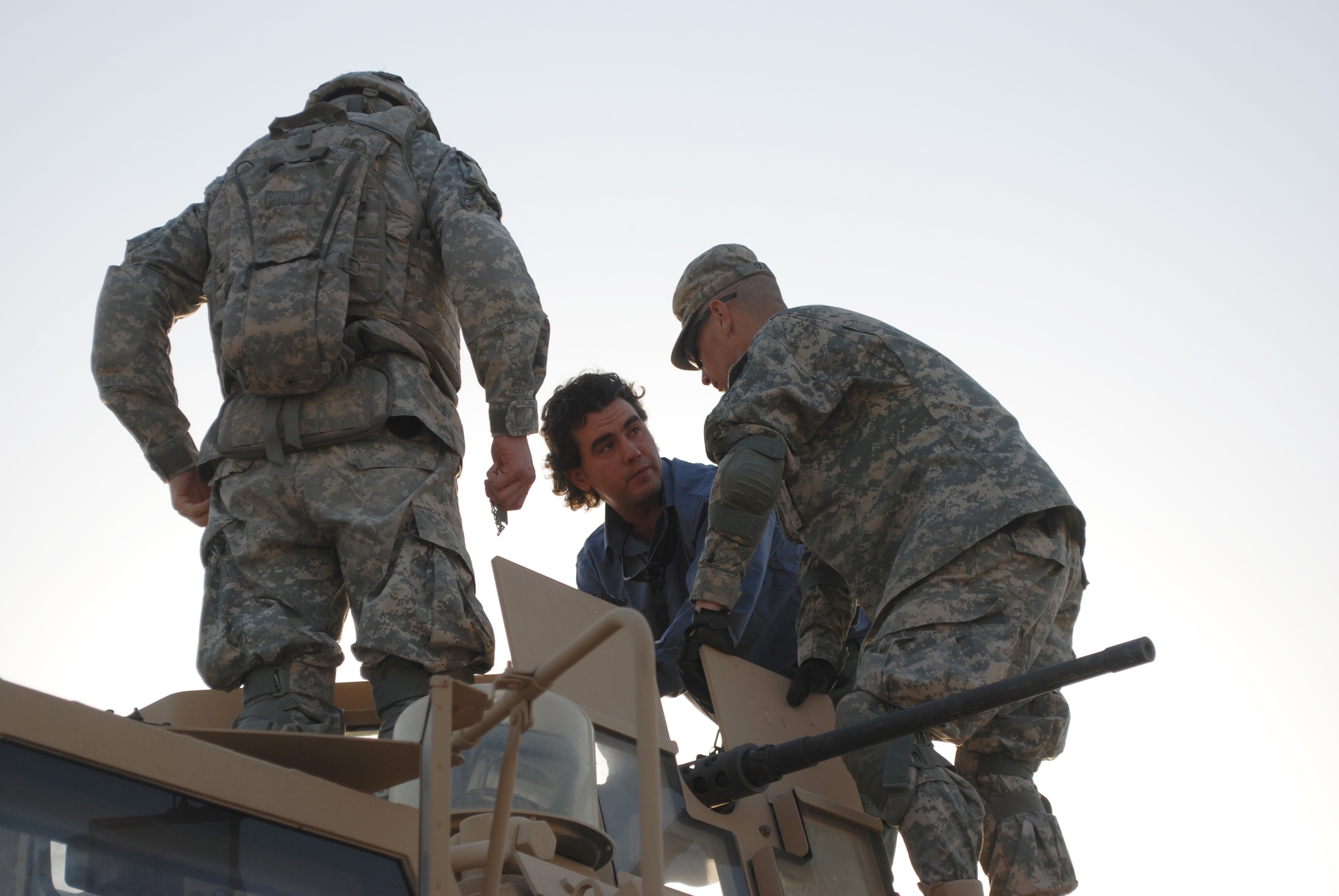
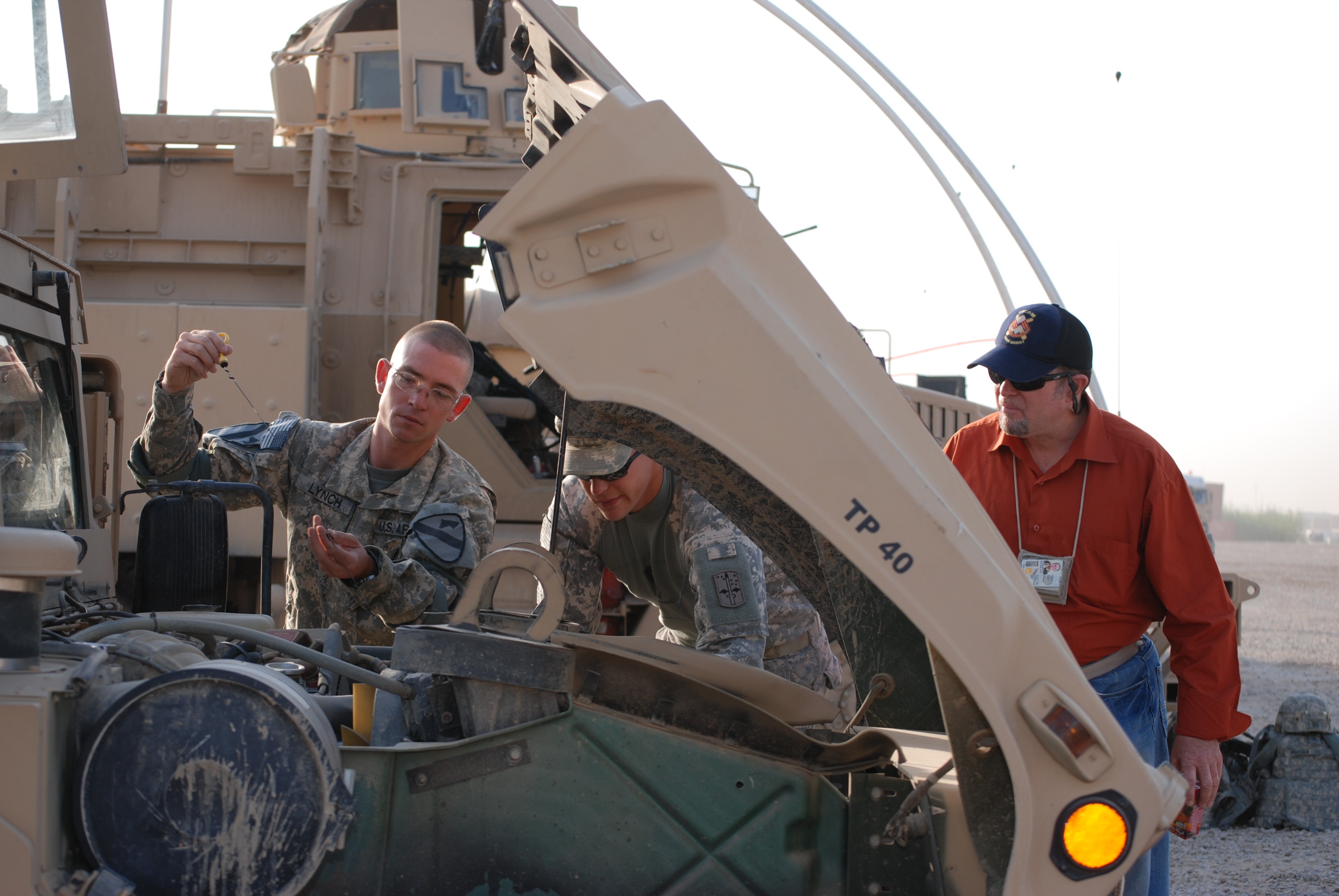
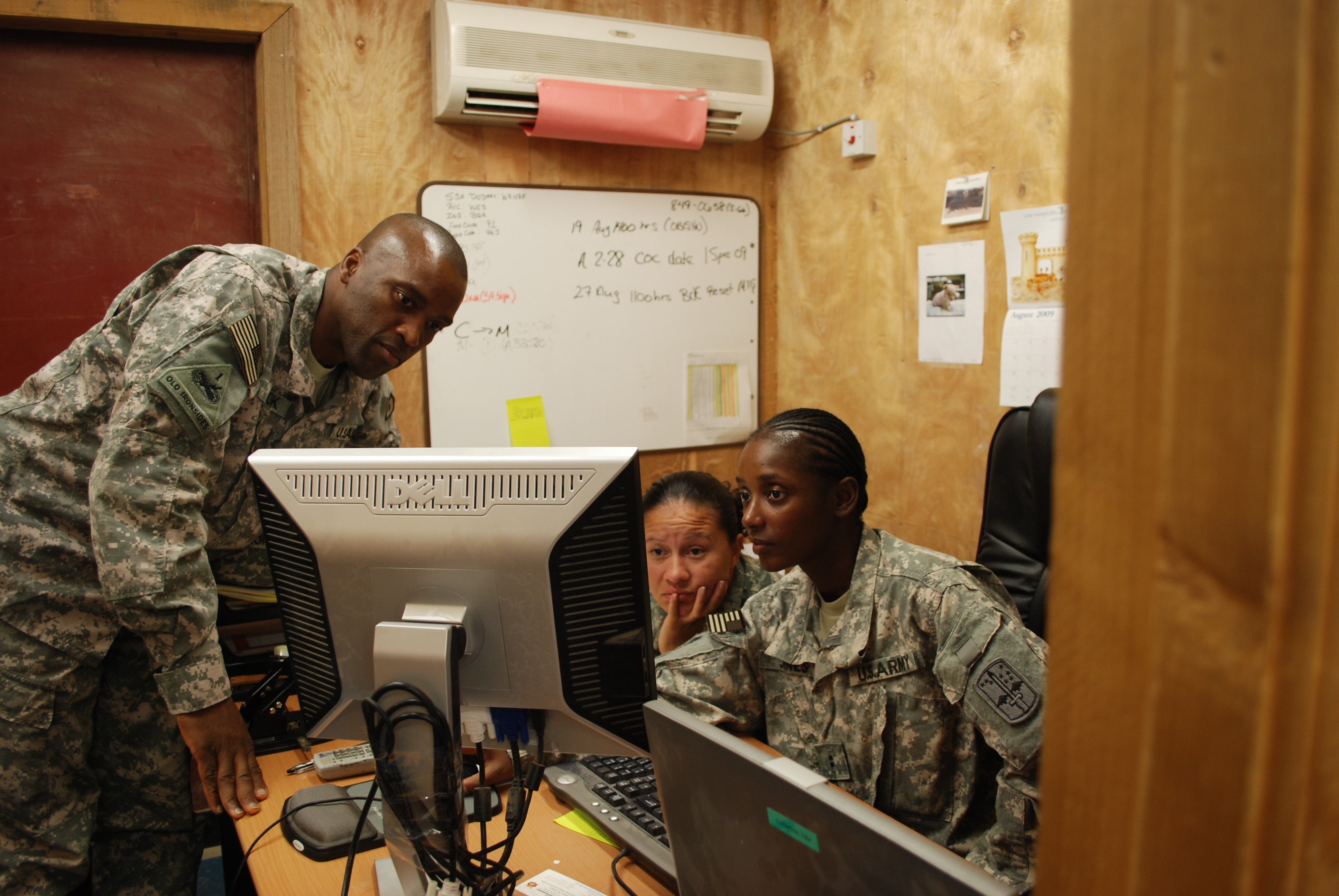

Social Sharing